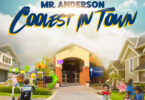- Red Bull Music Academy’s United States of Bass - July 19, 2016
- Red Bull Sound Select: Adrian Younge, No ID, Joey Dosik - April 14, 2016
- LA Red Bull Sound Select: Stormzy, Lizzo, and Kauf - March 28, 2016
 After spending four years studying music technology at UNLV, and interning in the audio engineering department at NPR, I felt pretty comfortable with the use of technology as it relates to music.
After spending four years studying music technology at UNLV, and interning in the audio engineering department at NPR, I felt pretty comfortable with the use of technology as it relates to music.
But it wasn’t until I read that the CD had turned 30, and realized that it has been a year since Steve Jobs passed away, that I really thought about how the creation, consumption, and culture of music often defines or is defined by the technology behind it.
Up until the 1950’s, 78s were the popular format of recorded music. By that time the technology had been nearly perfected except for the short amount of music that could be recorded onto the discs. Then the LP came around and bands were able to record more songs and create actual albums. Around the same time you have to thank Les Paul, Tom Dowd, and Sir George Martin for experimenting with multitrack recordings, completely revolutionizing the sound of music.
Although there are plenty of techniques and pieces of gear that grew to be popular in recording, there are a few that really stand out and changed music forever. Brad Plunkett virtually created the sound of Rock and Funk in the 70s with the Wah-wah pedal. Grandmaster Flash created a completely new set of tricks for DJs by implementing his homemade crossfader into a mixer. And with the advent of digital recording and computers, every college kid with a Mac Book has a recording studio in their dorm room. Hell you can even make beats with apps for your iPad/Pod/Phone.
New technology has not only changed the way music is created and recorded, but also the way that the industry has sold and marketed the music. Thriller would never have become the greatest selling studio album of all time if it were not for MTV. And MTV would not have been MTV if it weren’t for Thriller. Although Cable TV itself was not a new technology in 1981 when MTV launched, MTV’s application of it was.
 Just as MTV created a new marketing platform for music, digital samplers such as the E-mu SP-1200, Ensoniq ASR-10, and Akai’s MPC series brought forth new sounds and new streams of revenue. These machines allowed Hip-hop producers to sample their favorite grooves and drum sounds from records, and also lead to millions of dollars in revenue for record labels and songwriters through sample clearances (lawyers probably got a big chunk of change too before the idea of a “sample clearance” was common practice).
Just as MTV created a new marketing platform for music, digital samplers such as the E-mu SP-1200, Ensoniq ASR-10, and Akai’s MPC series brought forth new sounds and new streams of revenue. These machines allowed Hip-hop producers to sample their favorite grooves and drum sounds from records, and also lead to millions of dollars in revenue for record labels and songwriters through sample clearances (lawyers probably got a big chunk of change too before the idea of a “sample clearance” was common practice).
And now, the Internet. Of course we all know how Napster and its successors damaged the record industry (thank you Steve Jobs for legitimate downloads via iTunes and the iPod), and MTV slowly moved away from breaking new artists with music videos (thank you Lord Bieber and YouTube, demigods of the online music Pantheon), and everybody and their mom has a band with great music we can listen to online (MySpace I am talking about you).
As I sit here listening to anything I want for free on Spotify, with my Beats by Dre, I wonder what new technology will once again change music. Maybe with the advent of Pono I can finally get rid of all those SACDs I have been holding on to.
Honestly, I am just waiting to hear Thriller in 7.1-surround sound at 24 bit/192kHz, in a car with a Bose surround sound system, while I sit in the parking lot of an abandoned Tower Records.
Cause that is obviously the best way to listen to music.
Duh.






